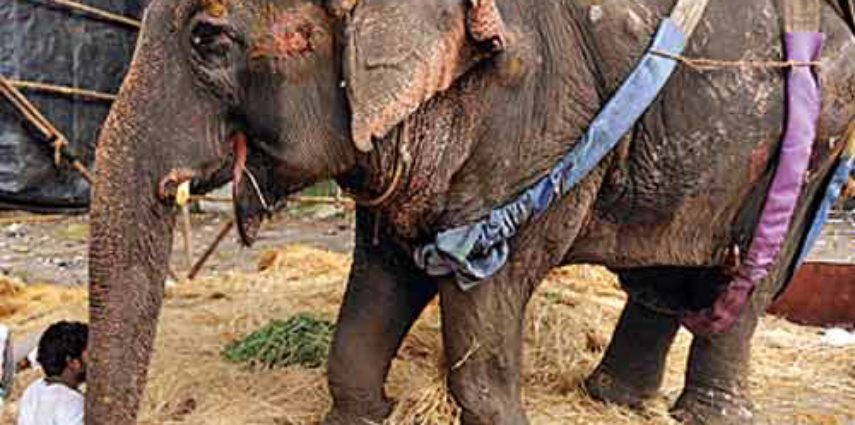What do you think would be the best birthday gift for someone who’s in jail and shackled 24/7? How about Freedom? And what if we offered this gift to the embodiment of the Birthday God, Lord Ganesh?
Ganesh Chathurti falls on August 29 when Indian people will kick off 10 days of celebrations. Massive clay statues of the elephant god will be unveiled in homes and street corners, as sounds of drums and pipes will reverberate across the nation. After 10 days of worship, the statues will be immersed in the sea and people’s lives will return to normalcy.
But there’s no relief for Lord Ganesh’s embodiment! India’s elephants will continue to be exploited for profit in public temples and forced to stand on concrete floors to bless the devotees even as they endure the curse of humanity. They’ll continue to be paraded on melting tar roads under the scorching sun to entertain the masses, even as the handlers seek shelter under the gentle giants. They will continue to be tortured by private owners and forced to beg all day to feed their handlers, even as these elephants continue to starve.
The plight of Bijlee, a begging elephant that I witnessed during my 2013 trip to India continues to haunt me ’till this day. When I visited the 58-year-old animal near a dilapidated building, she was strapped to a crane with bed sores all over her body and maggots feasting on her wounds. Her 5,000 kilos had caused a degenerative joint disease, making it difficult for her to stand. I couldn’t help but shed a few tears as I looked into her pitiful eyes that revealed sad tales of torture, neglect and abandonment.
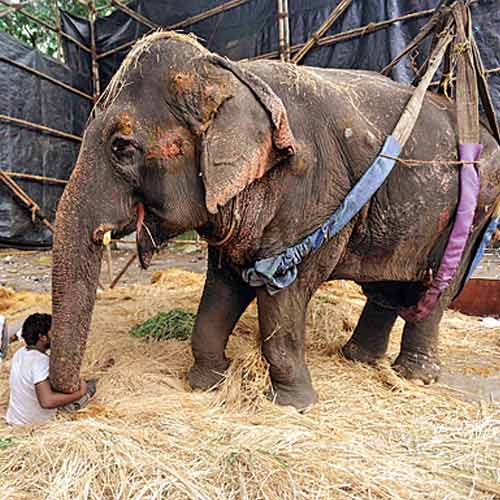
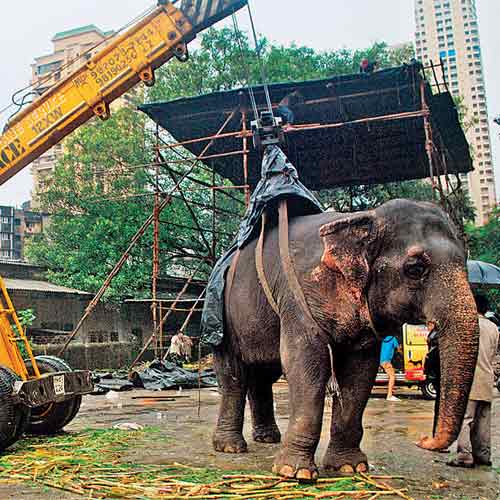
For more than 50 years, Bijlee entertained people, graced weddings and begged on the streets to feed her owners. But everyone knew her days were numbered after she collapsed on the busy streets of Mumbai the previous week. Many people rushed to save her life, as her heartrending story caught the attention of Indian superstars who publicly appealed for her confiscation. But in the end it wasn’t meant to be. Bijlee died 15 days after I saw her. Such is the sad tale of a begging elephant.
It’s a different saga for temple and festival elephants in the Southern State of Kerala. This year alone at least 17 of them have died due to torture and neglect. Just this past week, I was informed that a 44-year-old elephant was found dead under “suspicious” circumstances inside a temple complex. Manikandan was apparently deprived of food and water for several days, and kept in unhygienic conditions.
According to a complaint lodged to the Indian Minister of Environment and Forest, the elephant was tethered beneath a tree that provided little shade during his musth period, and consequently the elephant endured the scorching sun and downpour 24/7 during those three months. In his complaint to the Minister, Mr. Venkitachalam, an animal rights activist who calls himself “Anapremi” (a.k.a. elephant lover) said,
“As per the rule of law elephant must be kept inside a shed which is built as per the provisions of the Captive Elephant (management and maintenance) Rule 2003. But the temple authorities had not provided such facility for this elephant for past three months.”
He added despite the gross violations of the Wildlife Protection Act 1972, the Wildlife Stock Declaration Rule 2003 and PCA Act 1960, to date no arrests have been made in connection with the elephant’s death.
Meantime a report in a popular daily The Hindu boasts, “Kerala Tourism reached a milestone this week when the number of its followers on Facebook hit the 10 lakh (one million) mark… It is well ahead of global boards such as Singapore Tourism (8 lakh followers), Thailand Tourism (6 lakh), and Paris Tourism (3.2 lakh).”
As it turns out the Kerala Tourism department has created French and German Facebook pages for European tourists to provide travel information in their native languages. These tourists have been contributing significantly to Kerala’s tourism industry in recent years.
A key attraction during the peak tourism season is “Trissur Pooram” that takes place in May. As mentioned in my previous blog, it’s one of the grandest elephant festivals that showcases the largest congregation of male elephants in the world. Perhaps these French and German tourists don’t realize that behind all the glitz and glamor the 800 captive elephants in these festivities are brutalized and tortured.
The ground zero for elephant torture is the Sonepur Mela (fair) in the Northern state of Bihar, Asia’s largest cattle fair that takes place in November every year. Although a wide variety of animals and birds are sold, people from around the world are drawn to one main spectacle — the elephants.
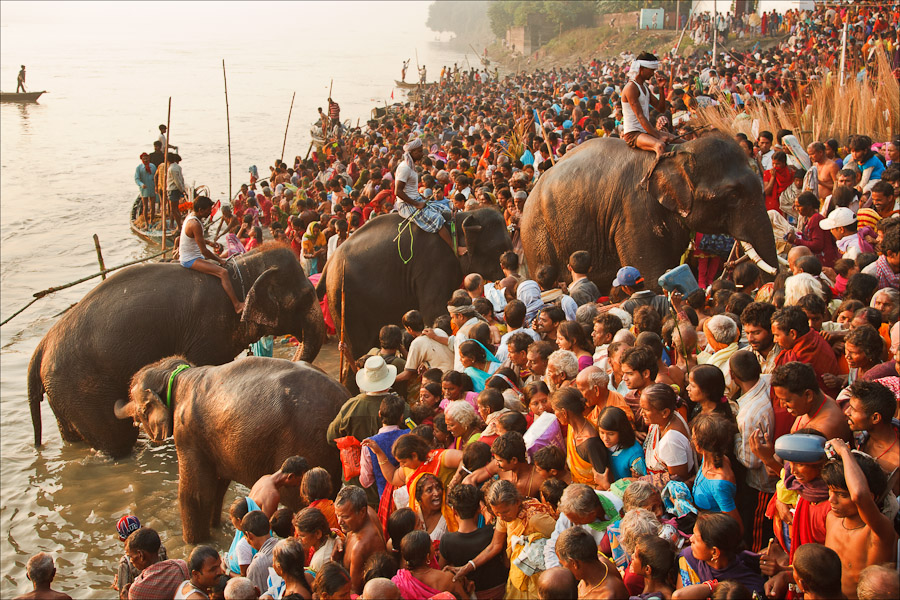
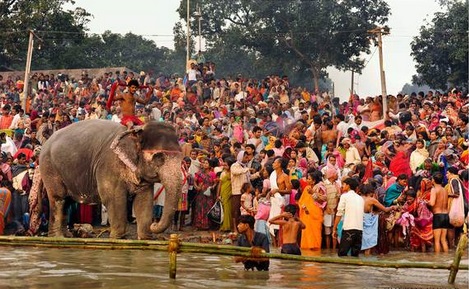
In Sonepur Mela India’s heritage animal is sold illegally, violating The Wildlife Protection Act (WLPA) passed in 1972 and amended in 2002. It declares India’s Elephants as a Schedule 1 animal that deserves topmost priority and protection. Indian elephant gained the “heritage animal” status in 2010, and the new law states, no elephants born after 1972 can be domesticated or used commercially. But still elephants are being bought and sold openly at the famous fair.
Sonepur Mela is a tradition that originated around 340 BC, when the Indian emperor Chandragupta Maurya bought elephants and horses across the river Ganges — a tradition that continues even in this era of conscious evolution. My question is, in a country where more and more people are becoming westernized, isn’t it about time they abolished traditions that inflict pain and suffering on a self-aware and intelligent animal?
India has made tremendous progress in the area of wildlife conservation, and in order to maintain it’s global reputation it needs to step up to the plate and put an end to elephant torture. Ganesh Chaturti seems like a perfect time to end the pain and suffering of India’s most cherished animals — the embodiment of Lord Ganesh. I think it’s time to unshackle the Gods in Chains, because they deserve to be free.

